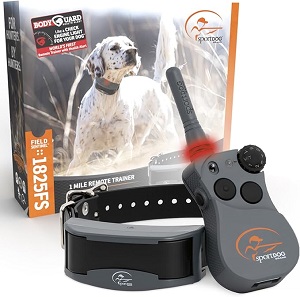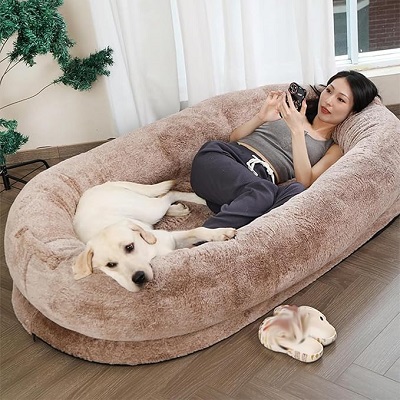
Dog Breeds That Are Great for First-Time Owners
Best Dog Breeds for First-Time Owners: Friendly and Easy to Train
Choosing the right dog breed is an important decision, especially for first-time dog owners. Some breeds are easier to train, have moderate energy levels, and are more adaptable to a variety of living situations. For first-time dog parents, it's important to find a breed that matches your lifestyle, activity level, and ability to train. Here’s a list of dog breeds that are great for first-time owners, along with reasons why they’re a good fit.
1. Labrador Retriever
- Size: 55-80 pounds
- Temperament: Friendly, outgoing, and intelligent
- Why They're Great for First-Time Owners: Labrador Retrievers are known for their even temperaments, friendly nature, and loyalty. They are highly trainable and eager to please, making them a fantastic option for new dog owners. Labs are also good with children and other pets, making them great family dogs. Their energy levels are moderate, and while they do need regular exercise, they’re happy to relax indoors after a fun walk or play session.
Key Traits:
- Easy to train
- Friendly and great with kids
- Good balance of energy and calmness
2. Golden Retriever
- Size: 55-75 pounds
- Temperament: Gentle, affectionate, and sociable
- Why They're Great for First-Time Owners: Golden Retrievers are one of the most popular family dogs for a reason: they’re friendly, patient, and incredibly loyal. They tend to get along with everyone, including children, other pets, and strangers. Golden Retrievers are also highly trainable and eager to learn, making them a great choice for first-time owners who want a dog that’s easy to handle and enjoy.
Key Traits:
Essentials for Your Newly Adopted Pet
Welcoming a shelter pet into your life is a beautiful journey. Here are some handpicked items to help your new friend feel safe, loved, and right at home:
- Very friendly and patient
- Excellent with children and other pets
- Highly trainable and eager to please
3. Cavalier King Charles Spaniel
- Size: 13-18 pounds
- Temperament: Affectionate, friendly, and calm
- Why They're Great for First-Time Owners: The Cavalier King Charles Spaniel is a small, affectionate dog that adapts well to apartment and house living. They’re known for their loving nature and can be a great fit for first-time owners because they’re relatively easygoing and don’t require extensive training. Cavaliers are also good with children and other animals, and they don’t have high energy levels, so they’re great for families who prefer a more laid-back companion.
Key Traits:
- Gentle and affectionate
- Great for apartment living
- Not too energetic, making them easy to manage
4. Pug
- Size: 14-18 pounds
- Temperament: Playful, curious, and affectionate
- Why They're Great for First-Time Owners: Pugs are small, lovable dogs with a big personality. They’re known for being friendly, charming, and adaptable to various living environments. Pugs have moderate exercise needs, so they don’t require long, strenuous walks. They’re easy to train and don’t tend to be overly demanding, making them a good choice for first-time dog owners who want a low-maintenance but playful companion.
Key Traits:
- Playful and fun-loving
- Easy to groom and care for
- Adaptable to small living spaces like apartments
5. Shih Tzu
- Size: 9-16 pounds
- Temperament: Affectionate, friendly, and easygoing
- Why They're Great for First-Time Owners: Shih Tzus are small, adorable dogs with a friendly and loving nature. They’re great companions, enjoy being close to their humans, and are relatively low-energy, making them perfect for owners who might not have a lot of time for long walks. Shih Tzus are also easy to train with positive reinforcement and are adaptable to both apartments and homes.
Key Traits:
- Friendly and loving
- Good for apartments and smaller homes
- Low to moderate energy levels, easy to manage
6. Beagle
- Size: 20-30 pounds
- Temperament: Curious, friendly, and good-natured
- Why They're Great for First-Time Owners: Beagles are small to medium-sized dogs that are known for their friendly, curious nature. They tend to be good with kids and get along well with other dogs. Although they do have a strong scent drive and enjoy tracking, they’re relatively easy to train and enjoy spending time with their family. Beagles are also moderate in energy, needing regular walks and play but are not overly demanding.
Key Traits:
- Friendly and great with children
- Moderate energy levels, good for families who can give them daily exercise
- Can be independent, but still loyal and affectionate
7. Basset Hound
- Size: 40-65 pounds
- Temperament: Laid-back, affectionate, and loyal
- Why They're Great for First-Time Owners: Basset Hounds are known for their calm and affectionate nature. They are generally easygoing and make great companions for first-time dog owners who may not want an overly active or excitable dog. While Basset Hounds enjoy a good walk, they are not as high-energy as some other breeds and are content to lounge around the house when indoors. Their loyal and loving temperament makes them a great choice for families.
Key Traits:
- Gentle and laid-back
- Great for families looking for a relaxed dog
- Good with children and other pets
8. French Bulldog
- Size: 16-28 pounds
- Temperament: Playful, affectionate, and easygoing
- Why They're Great for First-Time Owners: French Bulldogs are an excellent choice for first-time owners due to their small size, calm demeanor, and minimal grooming needs. They’re adaptable to apartment life, don’t require much exercise, and are happy to spend time lounging with their human family. French Bulldogs are also generally easy to train and love to be the center of attention.
Key Traits:
- Small, compact, and easy to manage
- Low energy but playful
- Quiet, making them good for apartment living
9. Pomeranian
- Size: 3-7 pounds
- Temperament: Energetic, curious, and loyal
- Why They're Great for First-Time Owners: Pomeranians may be small in size, but they have a big personality. They’re alert, curious, and full of energy. While they do need regular exercise and mental stimulation, their small size makes them manageable for first-time owners. Pomeranians are also very affectionate and enjoy spending time with their owners, making them great companions for families with time to dedicate to training and play.
Key Traits:
- Lively and alert, but easy to train
- Good for families with time for play and interaction
- Loyal and affectionate
10. Havanese
- Size: 7-13 pounds
- Temperament: Friendly, playful, and affectionate
- Why They're Great for First-Time Owners: Havanese are known for their friendly, playful, and adaptable nature. They thrive on companionship and are known to get along well with children and other pets. Havanese are also intelligent and easy to train, making them a great choice for first-time dog owners. Their small size and moderate energy make them well-suited to apartment living or homes with small yards.
Key Traits:
- Intelligent and easy to train
- Good for families, including those with kids and other pets
- Adaptable to apartment living
Conclusion
Choosing the right dog breed for your first pet can be a challenging but exciting decision. If you’re looking for a breed that is easy to train, friendly, and adaptable to different living environments, the breeds listed above are great choices. Each breed has its own unique qualities, but they all share traits that make them suitable for first-time dog owners: they’re easygoing, affectionate, and generally good with children and other pets. With the right care, training, and love, any of these breeds will make a fantastic addition to family.
Affiliate Products
We may earn a small commission when you shop through our links — it helps us keep sharing love and care for every dog out there, at no extra cost to you.
Up to 75% Discount

Dog Collar with Health Monitoring
BUY NOW »
Up to 55% Discount

Luxury Faux Furhuge Napping Bed
BUY NOW »

